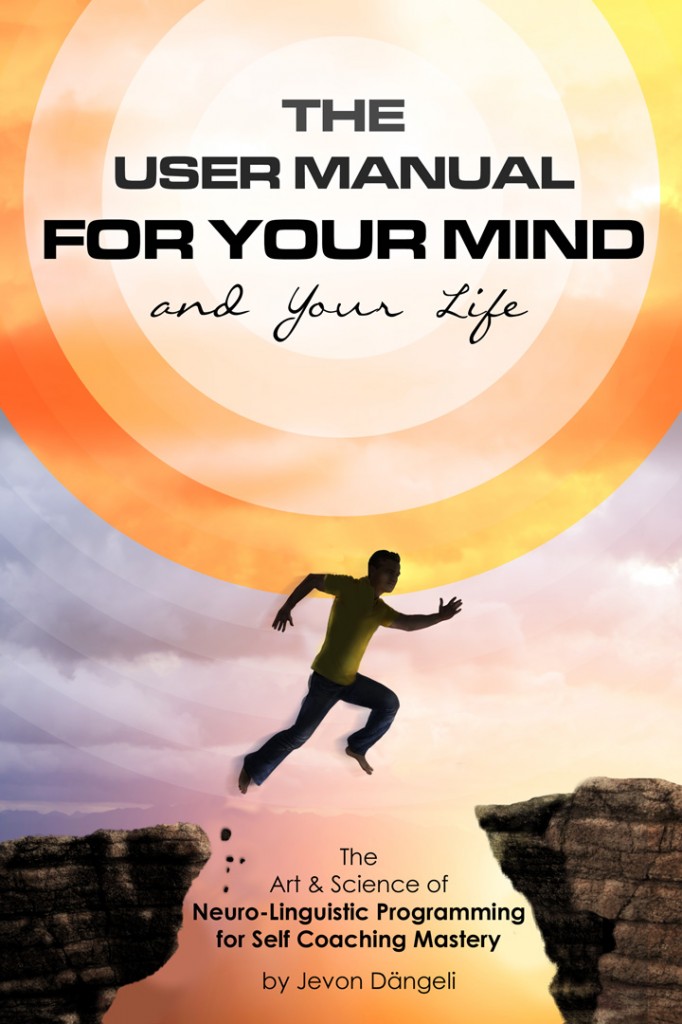This reference page introduces several popular NLP techniques, linking to practical explanations and guidelines for each technique.
> How to get rid of phobias and trauma using NLP
NLP’s Visual-Kinaesthetic Dissociation Technique (also known as the Fast Phobia Cure and Rewind Technique) helps to eliminate the effects of traumatic memories. It can be deeply healing for individuals who suffer from PTSD, with results being both rapid and sustainable. Intense fear of people, animals, objects or situations that are not harmful or dangerous (know as a phobia) is most often easily treated with this technique.
V-K Dissociation enables people who suffer from phobias or traumatic memories to reprogram their brain’s response to the original (causal) experience. It does this through separating (dissociating) mental pictures (V) and their associated feelings (K) so that irrational fear and behaviour in specific contexts are no longer triggered.
Continue reading here…
> The NLP technique for internal conflict resolution
NLP’s popular Parts Integration technique is a useful skill to overcome ‘bad habits’, indecision, procrastination and all sorts of internal conflicts.
Emotional experiences throughout life, and especially during the early imprint years can result in the creation of Parts at the unconscious mind. These Parts generate their own values and beliefs, and are responsible for certain behaviours. Overwhelming feelings and reactions, as well as out of control behaviours are the result of ‘Conflicting Parts’.
The NLP Parts Integration technique creates harmony between Parts of the unconscious mind, so that their values are in alignment. A person with ‘Integrated Parts’ is more congruent, empowered and clear in their decisions and actions.
Continue reading here…
> How to ANCHOR Resourceful States
Anchoring is one of NLP‘s most powerful and versatile techniques.
The form of Anchoring technique that I’ll provide you with is one where you will be able get yourself into a feel good or high performance state anywhere, anytime.
NLP Anchoring techniques are probably the most powerful set of tools in the coaching and therapeutic repertoire. They are “handles” that allow one to capture, stabilize and reproduce a particular state. Anchors enable the coaches and therapist to work in the here and now, as opposed to talking about experiences or using regression, which may lead to insight, but not actual change. In general, Anchoring is used to help people restructure their internal experience.
Continue reading here…
> Conquering Your Craving
If you have a craving for something that you would prefer to not crave, then the following skill is for you.
The NLP Swish Pattern is a valuable part of any addiction cessation program. By using this skill on a regular basis you may be able to reduce or even eliminate cravings for substances like sugar, caffeine, tobacco, alcohol, as well as overcome unwanted behaviours and reactions.
Continue reading here…
> Getting Motivated & Staying Motivated
People feel motivated when they have a goal in mind with a clear picture of a positive end result and a sense of excitement about achieving it. People are not motivated when what they’re (supposed to be) doing is perceived as having little (or no) relevance to their personal goals.
No matter where you are or what you’re doing, you can motivate yourself into action by connecting the task at hand with your long-term goal. Even if you think you have to do something because you don’t want to suffer the consequences of not doing it, there is a positive long term goal that completing your current task brings you one step closer to.
Continue reading here…
> How to feel less intimidated or annoyed by someone
Thoughts and feelings about things we like have typical distinctions; so do thoughts and feelings about things we don’t like have typical distinctions.
To gain control over your thoughts and feelings all you need to do is elicit their distinctions and then change those distinctions into those of the thoughts and feelings that you would like to have.
These distinctions are referred to as Sub-modalities in NLP.
Continue reading here…
> How to Change Your Personal History
With an understanding of NLP, the idea that “it’s never too late to have a happy childhood” becomes real. No matter what you experienced in your past, you have the ability to change your perceptions and beliefs regarding the past so that you can feel better about it right now.
There is more to us as humans than merely the sum of our past experiences. How we usually react to situations is largely determined by our past conditioning, however, we can choose how we want to feel and how to respond differently than our past habitual tendencies.
You can change your personal history by taking your current level of awareness (and life experience) and integrating it at those times of your life when you were less resourceful and being negatively influenced. You can easily imagine doing this and in so doing you’ll be re-coding the meaning which you give those past events. When negative past experiences take on a new resourceful meaning in your life, then your beliefs change and you become a more whole YOU.
Continue reading here…
> How to make BIG decisions small
Struggling to make your mind up? That’s understandable when the choice is between staying in the safe job (security) and starting their own business (uncertainty); or between staying in their relationship (familiarity) and separation (unknown); or between immigrating (adventure) and staying close to family (stability); etc.
We become terribly stuck in our thinking when we get caught up between only one thing and another, thereby deleting all the other possibilities that might also be present. There is a way out of the dilemma of “this or that”. And it starts by becoming more aware of what’s pulling us in seemingly opposite directions. In NLPwe refer to this as a values conflict. The good news is that we can learn to utilize the state (feeling) associated with a core value to inspire the decision that serves our best interest.
Continue reading here…
> Overcoming Mental Obstacles
What would you attempt to do if a successful outcome was inevitable, knowing that you could not fail?
Think about all the possibilities… What do you want to bring into your life? How would you like to be?
As long as you’re in the resourceful state associated with the achievement of your dream, you’ll find ways of manifesting it. As soon as that internal dialog begins which tries to talk you out of going for it and keeps reminding you of all the difficulties and dangers involved, then you’ve stumbled upon a mental obstacle. This is the kind of thing that prevents people from living the life they could be living.
Continue reading here…
> FIND THE GAP
The following technique focusses on how you can effectively overcome negative self talk, emotional reactions, runaway thoughts and things that go bump in the night.
We all have them – thoughts! Some work for us and some work against us. Nevertheless, as Byron Katie puts it: “Thoughts are harmless, unless you believe them.”
If you have uncontrollable unresourceful thoughts, then trying to replace them with positive thoughts or trying to stop them is futile.
What we resist persists. Thoughts need fuel to exist. They need our attention, and their favourite form of attention is: “Oh I wish I wasn’t thinking this again!”
Continue reading here…
> The NLP Communication Model
The NLP Communication Model explains how we take information from the outside world into our neurology and how that in turn affects our thoughts, feelings and behaviours.
As human beings, we’re constantly taking in information through our five senses and processing it at an average rate of about 4 million bits of information per second. A vast majority of this information absorption and assimilation takes place unconsciously. Consciously trying to process all this information might be fun, but it certainly wouldn’t be sustainable or practical. Therefore, in order to discern and utilise relevant information, our nervous system filters it.
The reality that we experience is largely determined by what we do inside our heads.
Continue reading here…
Check out this pioneering series of unique >>> NLP Coach training videos.

 This article outlines how the quality (aperture) of one’s awareness influences their present attitudes and aptitudes. It also points out how a particular way of shifting one’s awareness can bring about an immediate change in how one experiences themselves and their current circumstances.
This article outlines how the quality (aperture) of one’s awareness influences their present attitudes and aptitudes. It also points out how a particular way of shifting one’s awareness can bring about an immediate change in how one experiences themselves and their current circumstances.


 Triggers are the things that initiate thoughts, feelings and behaviours. There are triggers that boost performance and triggers that cause us to perform less than optimally.
Triggers are the things that initiate thoughts, feelings and behaviours. There are triggers that boost performance and triggers that cause us to perform less than optimally.


